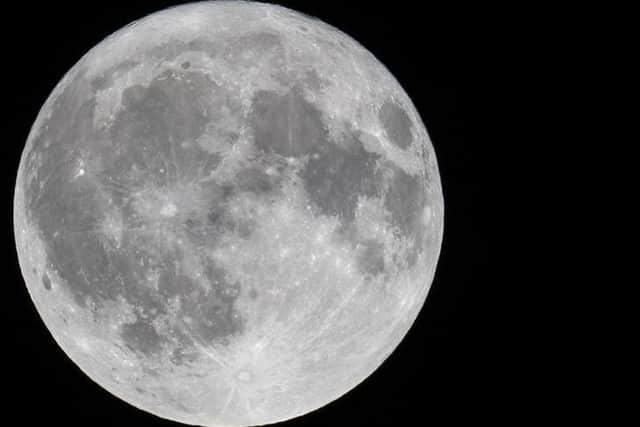Don't miss the final super-moon of 2020 in Milton Keynes
and live on Freeview channel 276
The moon is due on May 7 and will be so close that people should be able to see detailed craters with the naked eye.
You may even see it cast moon shadows on the ground, say experts from Under Lucky Stars.
Advertisement
Hide AdAdvertisement
Hide AdThis May moon is traditionally known as the Flower Moon because it appears at the time of blossoming flowers.


Zoltan Toth-Czifra, founder of Under Lucky Stars, said: "The Flower Moon is the fourth consecutive moon of 2020 to be classed as a super-moon, and will be the final one of the year.
"To make sure you catch it, the moon will rise on May 7th and burn brightly all night long. Moons always rise in the east and set in the west - so follow this direction in your search."
"In the current climate, a lower than average level of pollution combined with a good weather forecast means the view will be even clearer. As always, the moon will affect the Earth's ocean, and the extra gravitational pull means we should brace ourselves for some spectacular high tides worldwide."
Advertisement
Hide AdAdvertisement
Hide AdHere are some top tips from Under Lucky Stars on stargazing from home with no equipment:
Allow time - When you decide to stargaze, allow enough time. Your eyes are surrounded by brightness all day, and when they are looking for something they need time to adjust. Allow at least 30 minutes to see results when you are staring into space and you’ll be seriously impressed by the results.
Turn it off - Before you head into the garden, turn off all the lights in your house. Artificial brightness from light sources makes it harder to view the stars in the sky, so make your surrounding area as dark as possible.
If you can’t turn it off, wait - Bear in mind that turning off the lights means all the surrounding area. The moon is the brightest thing in the sky at night, and any glare can make it harder to observe the sky. Choosing moonless nights or ones where the moon is just a sliver is optimum for spotting the most stars.
Advertisement
Hide AdAdvertisement
Hide AdPlan ahead - If you want to seriously stargaze, you will need some directions. A great constellation to start with is Orion’s belt. You can find it by looking for the three bright stars that form a straight line in the sky, then use this as a starting point to discover more.